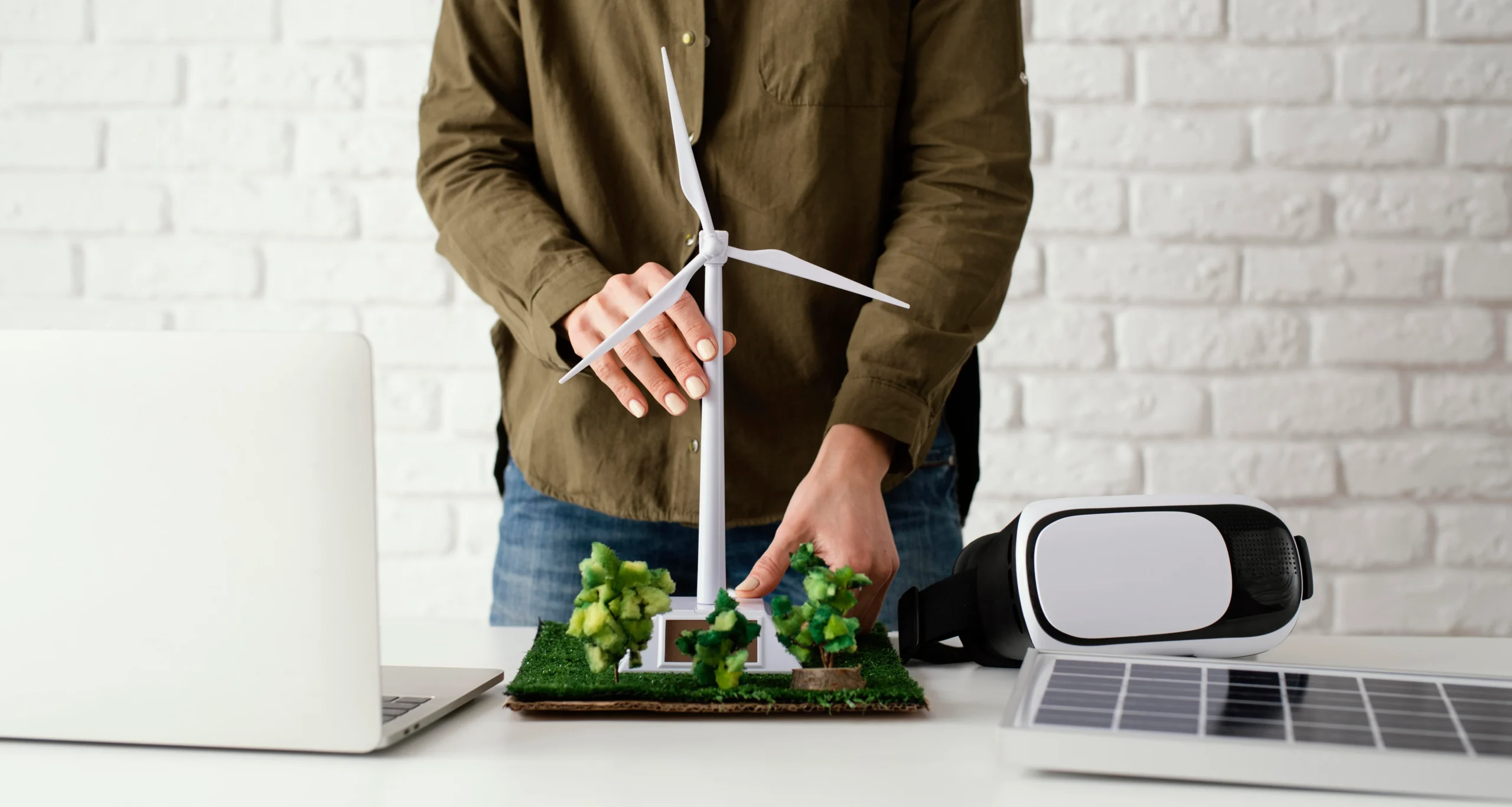In a quiet suburb in Oregon, the Johnson family has transformed their ordinary home into a beacon of sustainability. With solar panels glinting on the roof, a rainwater harvesting system feeding their garden, and a smart thermostat that learns their routines, the Johnsons represent a growing movement of families dedicated to eco-conscious lifestyles. At the heart of their transformation lies a commitment to eco-friendly technologies for sustainable living, a revolution that is reshaping how we consume energy, manage waste, and build communities.
Why Sustainable Living Matters
As the global population continues to rise, our consumption of natural resources has reached alarming levels. According to the Global Footprint Network, humanity uses the equivalent of 1.75 Earths to sustain our current way of life. Climate change, pollution, and dwindling biodiversity are stark reminders of the urgent need to shift toward sustainability. Eco-friendly technologies for sustainable living provide innovative ways to reduce our environmental impact while improving quality of life. From clean energy sources to smart home systems, these technologies are essential tools in creating a sustainable future.
Clean Energy Solutions
Solar Power
One of the most prominent eco-technologies in the world today is solar energy. Solar panels convert sunlight into electricity, drastically reducing dependence on fossil fuels. In 2023, solar energy accounted for 5.7% of the total electricity generation in the U.S., a figure that’s rapidly increasing (source: U.S. Energy Information Administration).
Advantages of solar energy include:
-
Low maintenance costs
-
Renewable and abundant source
-
Reduced electricity bills
-
Government incentives and rebates
Wind and Hydropower
While solar power often gets the spotlight, wind and hydropower also play significant roles in sustainable living. Wind turbines harness the power of moving air, while hydroelectric dams convert the flow of water into energy. According to the International Energy Agency (IEA), renewable electricity generation from hydropower and wind is expected to increase by over 50% between 2020 and 2030.
Smart Home Technologies
Energy-Efficient Appliances
Modern households are turning to smart, energy-efficient appliances to minimize waste. These include:
-
Smart refrigerators with energy monitoring
-
LED lighting systems with motion sensors
-
Eco-friendly washing machines using minimal water and electricity
These appliances not only reduce utility bills but also contribute significantly to energy conservation.
Smart Thermostats and Lighting
Smart thermostats like Nest and Ecobee adjust temperatures based on your routine, reducing unnecessary heating or cooling. Smart lighting systems allow you to control usage remotely or set schedules, cutting down on energy waste. Incorporating these technologies is a step forward in embracing eco-friendly technologies for sustainable living while enhancing comfort and convenience.
Water Conservation Technologies
Rainwater Harvesting Systems
Water scarcity is a looming threat in many parts of the world. Rainwater harvesting provides a sustainable solution by collecting and storing rain for irrigation, flushing, or even purification.
Benefits include:
-
Lower water bills
-
Reduced pressure on municipal water systems
-
Independence during drought periods
Low-Flow Fixtures
Low-flow toilets, faucets, and showerheads significantly reduce water usage without compromising performance. According to the EPA, switching to water-efficient fixtures can save an average household 13,000 gallons of water annually.
Sustainable Construction and Materials
Green Buildings
Green buildings are designed to be environmentally responsible and resource-efficient. They use sustainable materials, energy-efficient systems, and innovative designs to reduce their environmental impact.
Key features of green buildings:
-
Solar panels and green roofs
-
Natural ventilation and daylighting
-
Recycled construction materials
Insulation and Smart Glass
Advanced insulation materials and smart glass help regulate indoor temperatures, reducing the need for heating and cooling systems. These technologies contribute to a building’s energy efficiency and comfort. Investing in green construction is a practical way to implement eco-friendly technologies for sustainable living on a structural level.
Waste Management Innovations
Composting and Recycling Systems
Households and communities are turning to composting and advanced recycling technologies to reduce landfill waste. Compost bins convert kitchen scraps into nutrient-rich soil, while smart recycling bins can sort and compress waste for easier processing.
Biodegradable and Reusable Products
The use of biodegradable materials and reusable products such as beeswax wraps, bamboo toothbrushes, and stainless-steel straws—is increasing rapidly. These items reduce single-use plastic waste and promote a circular economy. According to the Ellen MacArthur Foundation, transitioning to a circular economy could generate $4.5 trillion in economic benefits globally by 2030.
Transportation and Mobility
Electric and Hybrid Vehicles
Electric vehicles (EVs) are revolutionizing the transportation industry. In 2024, EVs made up 18% of all new car sales in the U.S. (source: Statista). With zero tailpipe emissions and lower operating costs, EVs are a key component of eco-friendly technologies for sustainable living.
Charging infrastructure is expanding rapidly, making it more feasible for households to transition to electric mobility.
Public Transport and Bike-Sharing
Sustainable urban planning includes efficient public transport systems and bike-sharing services. These reduce traffic congestion and greenhouse gas emissions, particularly in densely populated cities.
Cities like Copenhagen and Amsterdam lead the way with their extensive cycling infrastructure and low car-dependency.
Urban Farming and Sustainable Food Systems
Vertical Farming
Urban areas are embracing vertical farming—a technique of growing crops in stacked layers using controlled environments. It uses less land and water while increasing food security.
Vertical farms can be integrated into apartment complexes, schools, or office buildings, bringing fresh produce closer to consumers.
Community Gardens
Community gardens not only provide local food but also foster social connections and environmental education. These spaces use organic practices and often incorporate composting and water-saving systems.
Supporting local food systems is a natural extension of embracing eco-friendly technologies for sustainable living.
Future Trends in Sustainable Technology
AI and IoT Integration
Artificial Intelligence (AI) and the Internet of Things (IoT) are enhancing the efficiency of eco-technologies. From monitoring energy consumption to managing smart grids, these tools optimize resource usage in real time.
Examples include:
-
Smart irrigation systems
-
Predictive maintenance in appliances
-
Automated waste sorting facilities
Carbon Capture and Storage (CCS)
CCS is an emerging technology that captures carbon dioxide emissions from industrial sources and stores them underground. While still in its early stages, CCS has the potential to significantly reduce greenhouse gas emissions.
Challenges to Adoption
Despite the benefits, there are challenges in adopting eco-friendly technologies for sustainable living:
-
High upfront costs
-
Lack of public awareness
-
Regulatory barriers
-
Technology access in developing countries
Government incentives, public education campaigns, and private sector innovation are crucial to overcoming these barriers.
Conclusion
The path to a greener future is paved with innovation, resilience, and a collective commitment to sustainability. From solar panels to smart irrigation, eco-friendly technologies for sustainable living offer tangible solutions to the environmental crises we face. As we continue to advance these technologies and make them accessible to all, the question becomes: are we ready to fully embrace the tools that can shape a sustainable tomorrow?





